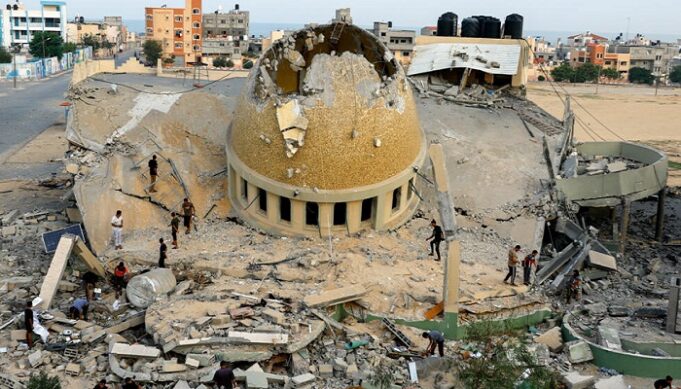Israeli forces clashed with gunmen from the Palestinian group Hamas on Sunday, 24 hours after the militants launched a surprise attack on Israel in which about 500 people were killed.
The conflict was spreading, with fire from Lebanon into northern Israel, which the armed group Hezbollah said it carried out “in solidarity” with the Palestinian people.
Israeli forces responded with artillery strikes into Lebanon and a drone attack on a Hezbollah post near the border, the military said. There were no reports of casualties.
The incursion from Gaza into southern Israel, the biggest in decades, could undermine U.S-backed efforts to forge regional security alignments that could threaten Palestinian aspirations for statehood and the ambitions of the group’s main backer, Iran.
Hamas fighters began their attack at dawn on Saturday with a huge barrage of rockets into southern Israel, giving cover to an unprecedented, multi-pronged infiltration of fighters into Israel from Gaza, a narrow strip that is home to 2.3 million Palestinians.
Hamas fighters killed at least 250 Israelis in clashes throughout Saturday and into Sunday, and escaped back into Gaza with dozens of hostages.
According to Reuters, more than 250 Gazans were killed when Israel responded with one of its most devastating days of retaliatory strikes.
“We will take mighty vengeance for this wicked day,” Prime Minister Benjamin Netanyahu said on Saturday.
An Israeli military spokesperson said operations were going on in eight areas around Gaza on Sunday, while Al Hadath TV cited the Palestinian Red Crescent as saying 18 people had been killed in Israeli targeting of two homes in Gaza’s Beit Hanoun district.
READ ALSO: Over 20 killed, scores injured as Hamas attacks Israel
Palestinian health officials said 20 children were among 256 civilians killed. Nearly 1,800 people were wounded, they said.
In the north, Iran-backed Hezbollah said in a statement it had carried out a rocket and artillery attack on three posts including a “radar site” in the Israeli-occupied Shebaa Farms, a slice of land occupied by Israel since 1967 that Lebanon claims.
Israel responded with artillery fire on southern Lebanon. There were no reports of casualties.
The escalation comes against a backdrop of surging violence between Israel and Palestinian militants in the Israeli-occupied West Bank, where a Palestinian authority exercises limited self-rule, opposed by Hamas that wants Israel destroyed.
The West Bank has seen stepped-up Israeli raids, Palestinian street attacks and assaults by Jewish settlers on Palestinian villages. Conditions for Palestinians have worsened under Netanyahu’s hard-right government. Peacemaking has been stalled for years.
Hamas leader, Ismail Haniyeh, said the assault that began in Gaza would spread to the West Bank and Jerusalem. Gazans have lived under an Israeli blockade for 16 years.
In a speech, Haniyeh highlighted threats to Jerusalem’s Al-Aqsa Mosque, the continuation of an Israeli blockade on Gaza, and Israeli normalization with countries in the region.
Haniyeh said: “How many times have we warned you that the Palestinian people have been living in refugee camps for 75 years, and you refuse to recognise the rights of our people?”
Bodies of Israeli civilians surrounded by broken glass were strewn across the streets of Sderot in southern Israel near Gaza. The bodies of a man and a woman were sprawled across the front seats of a car.
Terrified Israelis, barricaded into safe rooms, recounted their plight by phone on live television.
Senior military officers were among those killed in fighting near Gaza, the Israeli military said.
Netanyahu’s office said his security cabinet had approved steps to destroy the military and governmental capabilities of Hamas and Islamic Jihad, another militant group, “for many years”, including cutting electricity, fuel supplies, and the entry of goods into Gaza.
In Gaza, black smoke, orange flashes, and sparks lit the sky from explosions. Israeli drones could be heard overhead.
Gaza’s dead and wounded were carried into crumbling and overcrowded hospitals with severe shortages of medical supplies and equipment. The health ministry said 232 people had been killed and at least 1,700 wounded.
- 30 Kwara school students score above 300 in 2024 UTME - May 3, 2024
- Tinubu to commission 3 gas infrastructure projects - May 3, 2024
- Court stops NERC from increasing electricity tariff - May 3, 2024










